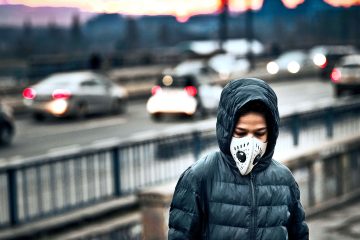Over a year has passed since my first email to join a lab for Laidlaw Scholars. I thought I knew what to expect entering the research field at the college level because of my previous experiences in high school. However, my experiences with the Leveraging Environmental Epidemiology for Equity (LEEFE) lab have proved that I was quite wrong in the best way possible. It was a difficult experience, but worth it. I’ve been able to learn so much about statistics, research methods, how to ask questions, and work with a team.
I was told at the beginning that my project would be challenging, and I would have to increase my epidemiology knowledge to join LEEFE. I knew from when I looked up the group that I was interested in the current research projects. Dr. Corlin helped to guide me towards the project I ultimately chose: environmental factors and their association with COVID-19 cases. When I heard sunlight as a potential factor, it piqued my interest. At the beginning of the pandemic, there were discussions about sunlight, but I was curious what sort of relationship there would be. As a part of my Laidlaw Scholars application, I had to write a project proposal. During that process, I delved into the then nascent literature regarding the putative relationship between sunlight and COVID-19, and I became excited to work on the project over the summer. In the meantime, I attended team meetings and was able to see all the amazing things other members of LEEFE were working on in their projects.
When the summer finally arrived, I was ready to analyze, or so I thought. As it turns out, there is more to epidemiological research than statistics. I started with a literature review and examined papers on COVID-19 and sunlight. I wondered while reading these if my research idea had already been assessed and if I could add anything to the current field of knowledge. But as I read more – which took longer than I expected, I identified how my research did address knowledge gaps.
Then I was ready to prepare for the analysis. Most of the spring semester and beginning of the summer, I thought to myself, “how hard could stats really be?” As it turns out, quite hard. After a lot of research into statistical methods, I made a presentation to Dr. Corlin justifying the method I had chosen. I initially chose a zero-inflated negative binomial regression (ZINB), which is a mouthful to say when talking to other people. But after further assessing whether the assumptions of this model were met, I determined that it was not the best choice and instead chose the related negative binomial regression modeling approach. As I went through the process of choosing my statistical approach, I didn’t quite understand why I was asked to defend my approach. Later, I realized how helpful it was to have practice justifying my analytic decisions when I had to publicly present my work.
As I was developing my analytic plan, I was also working with the dataset to understand what the variables were and how data were collected. I didn’t quite understand at first, but now I know it’s essential to understand each variable’s source, units, and characteristics since that affects the analytic decisions and interpretation of results.. A few weeks into playing around with data, I ran into an issue. The original national sunlight data that was in the dataset only had a couple thousand data points for the time period of January 2020 to May 2021 with inconsistent temporal distribution. The geographic distribution was limited as well. I didn’t want to give up yet. So, I examined where other papers obtained their data until I found the one that was pretty much perfect: the USDA UVB monitoring system. The geographic and temporal distribution were much better suited to my research question. I worked with the team to put it into the public dataset and began working on it. The analysis was hard, but I had a lot of help from the team. Before I knew it, the school year had begun.
During the semester, I mostly focused on making figures, which sounds simple, but it isn’t. I had never made tables or anything like that before in Stata or for research, so I had to learn how to code it and learn what the conventions are. Suddenly, it was time for poster presentations through Laidlaw! I made a poster and was ready to present. It was on Zoom, which was great because my family was able to come along with friends. It was amazing to reflect on all the work I had accomplished throughout the summer, and then be able to share it with other people. Everyone listening was so engaged and interested, which in turn made me more confident when presenting. I was so excited to share what I had done, but I only had an hour. When I was asked questions about my research, I was confident answering them. Dr. Corlin asked some really hard ones, but I was still able to give solid responses.
Currently, I’m in the process of developing a research paper. It is challenging, but I feel prepared because of community health coursework. It’s exciting to think that I will publish a paper! This past summer has been amazing, and I’ve learned how to do so much. I’ve also come to understand the importance of reaching out when I have questions. There were times when a question would’ve stumped for days, but one email meant that it could be resolved in hours instead. I’ve been able to be a part of the research process to understand this current pandemic. I’ll be forever grateful that I was given an opportunity to join the LEEFE lab. This summer was transformative, and I wouldn’t trade it for anything else.



0 Comments